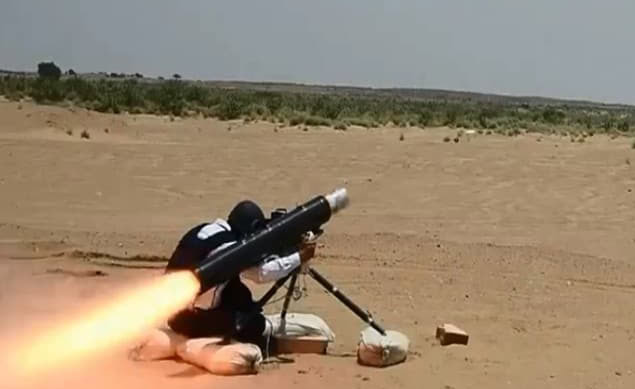Zorawar Tank completed successfully the first field test in the desert area of Rajasthan. Moreover, in the very first test conducted in the desert, the tank succeeded in hitting the intended target with accuracy. The trials were conducted by DRDO. With this, India’s search for a fast-armoured fighting light vehicle has now been completed. As a result, now the force of the Zorawar tank will prevail everywhere. Be it the high-altitude war zones in Ladakh and Arunachal Pradesh adjacent to China or the Rann of Kutch adjacent to Pakistan.
The Zorawar Tank is a light tank developed by India’s Combat Vehicles Research and Development Establishment (CVRDE). It is designed specifically for use in high-altitude terrains like the northern borders, such as Ladakh. It is named after General Zorawar Singh, a military leader known for his campaigns in the Himalayas during the 19th century.
The Zorawar Tank is intended to strengthen India’s capability in managing the challenges posed by high-altitude conflict zones, particularly with an eye on the China border. Its development is part of India’s broader efforts to modernize its military forces.

Currently, heavy tanks deployed at the Chinese border
Currently, heavy tanks weighing 40-50 tonnes are been deployed at LAC. These tanks are Russian-origin Bhisma T90, Ajay T-72 and the main battle tank Arjun. To reach the high-altitude battle areas of Ladakh, army personnel have to pass through many passes. For that reason, it is very difficult with these heavy tanks.
Now soldiers will be able to move faster with the Zorawar Tank. Since the weight of the Zorawar Tank will be less than 25 Tonnes. Therefore these can be transported very easily at a height of 8 to 10 thousand feet. Furthermore, heavy tanks like T-72 and T-90 found it difficult to reach there.
L&T will manufacture the Zorawar Tank
L&T will manufacture 354 Zorawar tanks in collaboration with DRDO. Additionally, it will be prepared on the chassis of K-9 Vajra Self-Propelled Artie 155 mm. Moreover, the K-9 Vajra tank has also been manufactured at L&T’s plant in Hazira, Gujarat. Numerous Indian industries, including micro, small, and medium enterprises (MSMEs), will play a pivotal role in the development of various sub-systems.
It will take two years to test the indigenous Zoravar Tank. Moreover, the upcoming trials will include missile firing. The army will also test the tank’s performance in summer, winter, and high altitude before it can go into production. After that, it will be included in the army fleet by 2027. All these tanks will be light as well as provide better firepower and protection.

Specifications of the Zorawar Tank
The Zorawar Tank is a high-altitude, light tank developed by India, optimized for mountainous regions like Ladakh, where mobility and agility are crucial. While the full set of specifications might evolve as development progresses, based on available data and expectations, here are some key features:
1. Weight & Mobility of Zorawar Tank
- Weight: Around 25 tons or less, making it much lighter than standard battle tanks.
- Mobility: Designed for high-altitude warfare, ensuring it can operate effectively in challenging terrain and elevations. Thus this includes a focus on agility, with a good power-to-weight ratio and all-terrain mobility.
- Engine: Expected to have a high-powered engine (up to 1,000 hp) to ensure it can manoeuvre in rough terrains. Thus providing excellent speed and climbing ability.
2. Armament of Zorawar Tank
- Primary Weapon: Likely to be a 105mm gun or a 30mm cannon, suitable for engaging light and medium armoured vehicles as well as infantry positions.
- Secondary Armament: Co-axial machine guns, possibly a 7.62mm or 12.7mm machine gun for infantry support.
- Anti-tank Guided Missiles (ATGMs): Provision to fire-guided missiles, extending its effective range and armor-penetration capability.
3. Protection
- Armour: Lightweight composite armour to ensure high mobility without compromising on essential protection. Therefore the armour would likely be modular, allowing upgrades.
- Active Protection Systems (APS): Likely equipped with APS to defend against incoming anti-tank guided missiles (ATGMs) and rocket-propelled grenades (RPGs).
- Explosive Reactive Armor (ERA): Potential to add ERA for additional protection against high-explosive anti-tank (HEAT) rounds.
4. Electronics & Communication
- Fire Control System (FCS): A modern FCS with laser rangefinders, thermal imagers, and night-vision capabilities for all-weather, day-night operation.
- Situational Awareness: Sensors and cameras provide 360-degree visibility.
- Battle Management Systems (BMS): Integrated with India’s military communication network to coordinate with other units, drones, and command centres.
5. Operational Altitude
- The tank is specially engineered to operate effectively at altitudes of up to 15,000 feet or more. Thus maintaining performance in low-oxygen environments that is critical for high-altitude warfare.
6. Crew
- Expected to have a crew of 3 or 4 (commander, gunner, driver, loader).
7. Variants
- The Zorawar platform is likely to have multiple variants. That include reconnaissance, anti-aircraft, or command post versions, to support a variety of battlefield roles.
8. Range and Endurance
- Fuel capacity allows for extended operational range to support sustained operations in remote areas.
- High endurance in terms of autonomous operation time.
These specifications aim to make the Zorawar Tank a formidable asset for India’s armed forces in challenging high-altitude scenarios, particularly along the northern borders.






